Bringing Science to Life with Creative Science Communications
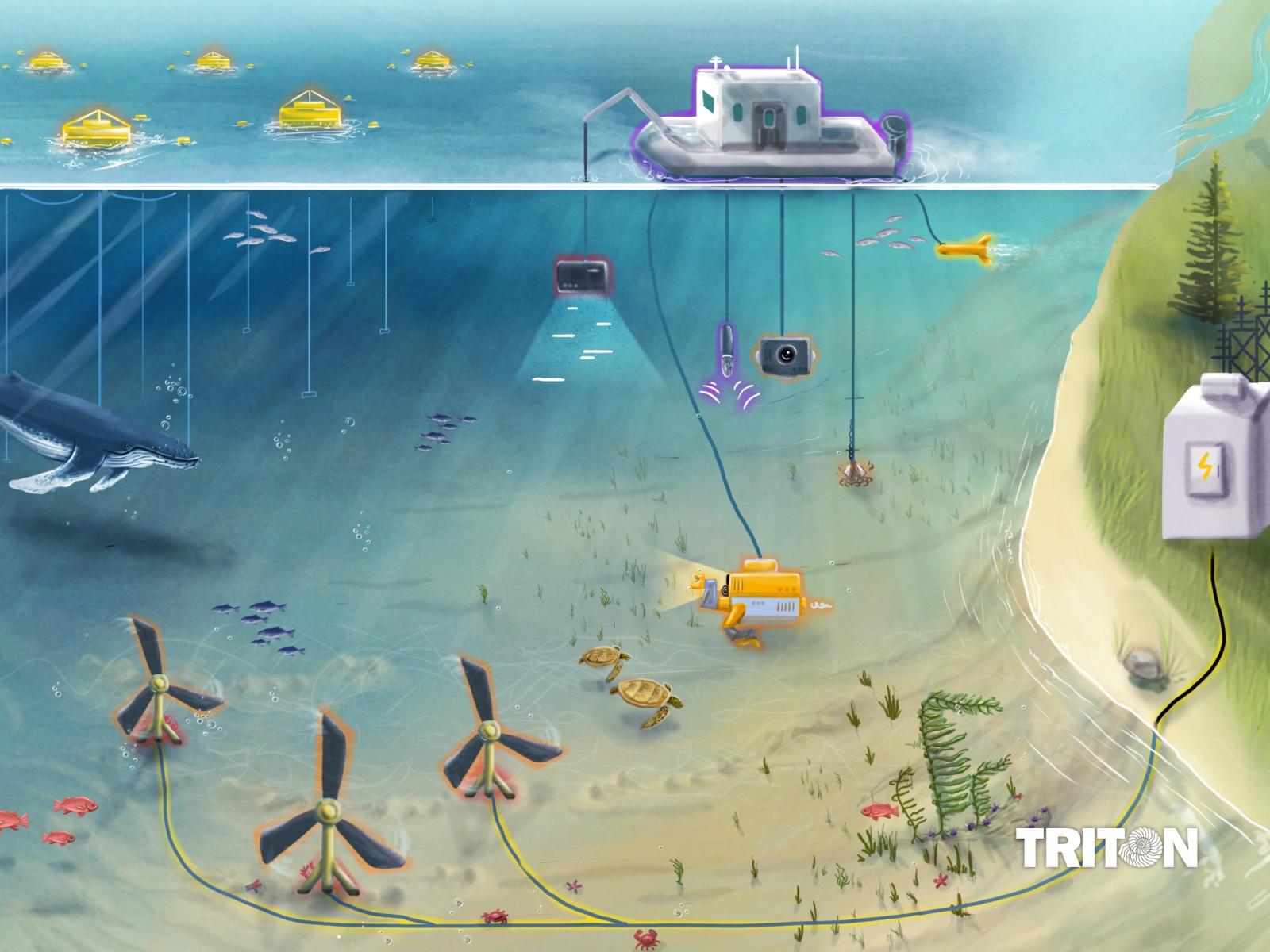
Underwater illustration of marine energy devices and environmental monitoring technologies used for a journal cover for Triton's special issue in the Journal of Marine Science and Engineering.
(Illustration by Stephanie King | Pacific Northwest National Laboratory)
"Nothing in science has any value to society if it's not communicated." These famous words by clinical psychologist Anne Roe are as true today as they were when she spoke them in 1952.
This Triton Story is dedicated to the people working to make science meaningful, accessible, and inspiring through creative communication.
The Triton Initiative is a Department of Energy (DOE) Water Power Technologies Office project with a mission to reduce barriers to testing marine energy devices by researching and developing monitoring technologies and methods to understand potential environmental impacts. This mission helps the United States move one step closer to meeting its renewable energy goals in the race for climate change solutions. As a project, Triton is dedicated to making its research as transparent and impactful as possible through communications. At the core of effective science communication is compelling content that presents results in accessible, inspiring ways. To create this level of engaging content, Triton works with a team of talented artists and communicators who bring renewable marine energy science from the ocean to your screen.
This team includes communications specialist Kelsey Adkisson, photographer Andrea Starr, and scientific illustrator Stephanie King—three of the amazing women behind the scenes of Triton's communications efforts.
Connecting people to science

Kelsey Adkisson is a marine biologist by training and a science communicator by trade who currently serves as a communications specialist for PNNL. Her path to this role was far from linear. Adkisson has always had an affinity for science and a love for the ocean. She earned a BS in environmental science, focused on ecology and fisheries, and then pursued an MS in marine biology. Her academic research involved all sorts of field missions—studying mountain goat population dynamics, researching the effects of wildland fires, conducting salmon and clam research, and more. In graduate school, Adkisson started to get involved with policy work, especially around invasive species management which launched her into a policy-leaning career focused on topics in marine science.
She worked in fisheries management for many years, working at the intersection of research, public engagement, economics, and public policy to help inform environmentally sustainable and economically sound decisions for fisheries. During this experience, she realized she liked working with people and solving problems where communication and outreach were solutions. For two years following that position, she served as a fellow for the Oregon Governor's Natural Resource Office/West Coast Governor's Alliance Marine Policy Fellowship. In this role, she used her interdisciplinary skills on various projects in marine spatial planning and aligning state and national marine policies. Through this experience, she learned quickly that communication is a big part of policy. She reflects, "Regulators can't make decisions if they don't understand the science in the first place. There is a lot of value in understanding the communications angle." In this role, she distilled information and authored everything from white papers, management plans and technical reports, to websites and infographics.
This experience was the catalyst for Adkisson's formal pivot from research to leading science communications at the Oregon Department of Fish and Wildlife’s Marine program. Here she gained valuable experience in applied communication and outreach before joining PNNL as a communications specialist. She first worked for various research groups on topics related to nuclear energy and environmental justice, where she learned a great deal about the breadth of PNNL's research and communicating science outside her area of expertise. She then returned to her coastal sciences wheelhouse, where she now serves as a technical communicator for PNNL's coastal and marine research and hydropower projects. This is where she became connected to Triton.
Adkisson's career always pointed back to communications. She explains, "When I did all that fieldwork during my studies, I had so many moments of wishing the world could see what researchers see in these environments." She didn't want scientists’ collective passion to remain locked up in the realm of research and recognized what non-science audiences could gain from having a glimpse into the minds of researchers. This sentiment is particularly relevant to Triton's research because it focuses on a novel renewable energy resource that is relatable to few but beneficial to many.
"Marine energy has all this vast, untapped potential and is really the next frontier of energy," says Adkisson. "In a time where there is a drive toward clean, green, power, it's exciting to work on a topic where there is so much opportunity," she adds. Adkisson appreciates that projects like Triton help change the way the world gets power. She also loves the industry collaboration aspect of Triton.
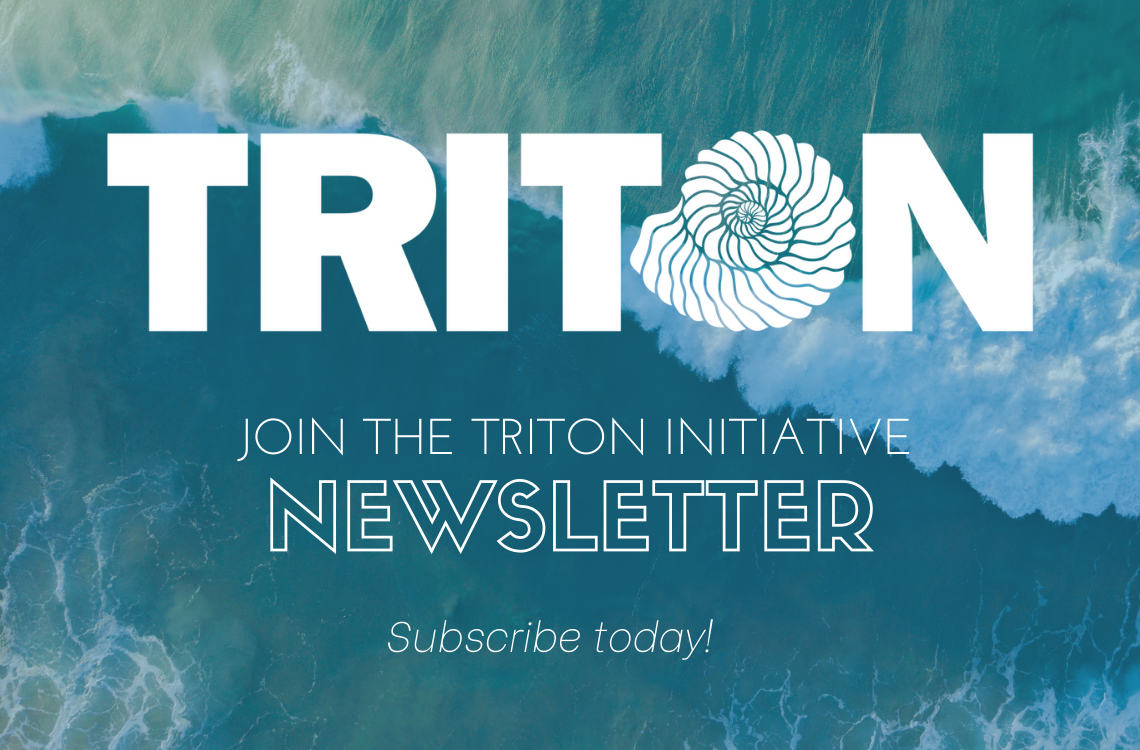
Adkisson wears many hats for Triton, from supporting the strategic development of Triton's communications tasks, curating newsletter content and social media posts for the project, coordinating Triton's content with PNNL's communications team, and so much more. She is invaluable to Triton. Her knowledge of the complexities of marine and coastal sciences and the communities with the power to influence research informs her communications approach. Triton has become accustomed to Adkisson asking questions like, "How does this content relate to the project's goals?" or "What audience are you reaching with this tactic?” These considerations focus Triton’s communications content to target specific audiences, making sure messaging connects to the project’s mission and overall goals.
When asked what medium of science communication excites her most, she responded with confidence, “Whatever will best achieve the goal you are working toward—sometimes that’s social media, or a webinar, or a written piece. I like working on whatever has the greatest impact.” A big part of determining the best approaches to communication involves brainstorming ideas on messaging, strategy, and creative ways to tell a research story. For Triton, this often involves bringing together technical experts with communications specialists. Capitalizing on PNNL’s interdisciplinary capabilities allows us to effectively tell Triton’s story. By learning from communicators like Adkisson, scientists can better articulate what they do and why it matters. Concisely translating research results to digestible, public-facing content helps better inform decision makers or increase collaboration outside their field.
Adkisson offers some wise words: “Science doesn’t operate in a vacuum, and it doesn’t start and stop with journal articles.” While the peer-review process is important, results also need to be shown in compelling ways that will invite people to connect with the research. One of Triton’s next efforts will involve disseminating research results and recommendations from recent field trials that assessed environmental monitoring technologies and methods for studying potential stressors to the environment associated with marine energy devices. This research, published in the Journal of Marine Science and Engineering’s special issue, Technology and Methods for Environmental Monitoring of Marine Renewable Energy, offers valuable recommendations for marine energy end-users to conduct environmental monitoring. Adkisson's expertise and co-authorship of the article "A Framework for Effective Science Communication and Outreach Strategies and Dissemination of Research Findings for Marine Energy Projects” in the special issue demonstrate her versatility and success as a science communicator.
From behind the camera
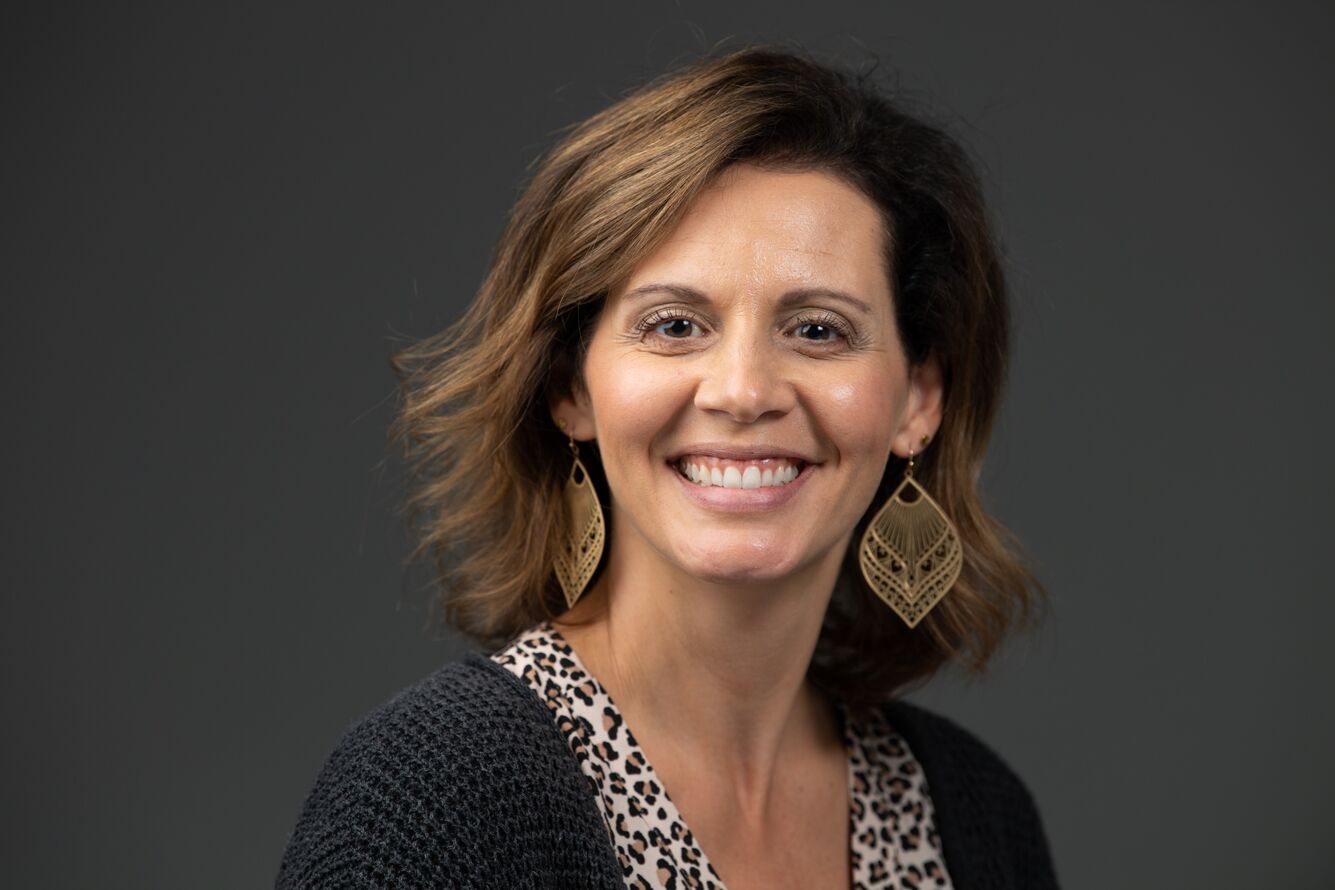
One of the most effective ways to tell a compelling science story is through photography and videography. It takes a special eye behind the lens to humanize and capture the essence of research. PNNL’s photographer, Andrea Starr, is one of Triton’s contributors with an artistic eye for science photography. Triton has shared research content captured through Starr's perspective for many years. She offers a valuable perspective on why photography is crucial to documenting scientific research and the people who perform the researchers.
Starr's career path to PNNL started in business, where she briefly worked in human resources for DOE. Her instinct for communications led her to work for DOE's media relations, which turned into a similar position with PNNL. Starr always had an interest in photography, but the leap to becoming a photographer full-time was an intimidating one. She took several years off from work at PNNL and started her own business as a self-taught photographer, using the opportunity to hone her style and work with photojournalists to learn the tricks of the trade. Several years later, she returned to PNNL as a writer for PNNL's communications team, which opened doors for her to build her portfolio in photography. During this time, requests for photos were piling up and Starr was able to fill a much-needed role at PNNL as a dedicated photographer. Starr now does it all. With the broad research initiatives at PNNL, Starr’s day may include photographing research in action, headshots of staff, facilities, and events, and supporting the videography team.

In the words of Starr, what makes good science photography involves “Anything that provides a glimpse into the magic of science.” There are many types of science photography, such as taking photos through a microscope, capturing an abstract angle of an innovative instrument, or snapping pictures of the candid moments where researchers exude their passion or frustration for their work. She most loves fieldwork photoshoots, including action shots of Triton researchers conducting boat tests in Sequim Bay. This candid, documentary-style photography allows Starr to capture special moments that allow onlookers to put themselves in the researchers’ shoes during a field deployment or experiment.
"Science is hard work. In order to do research, scientists need to love what they do. I like when I can be there to capture the moments that show a researcher’s love for their work," says Starr. Through science photography, Starr has the opportunity to capture those little moments that communicate the wonder of science to the outside world. Her favorite days are when she captures the details that a researcher normally might be unaware of but would be extraordinary to an outsider, like seeing a pod of harbour porpoises swim by a research vessel or capturing how researchers grow algae for biofuels production.
Photography can make science less intimidating by providing a visual exploration of the equipment that goes into an experiment, the location of a field test, or the output of a computer model. "People are visual creatures," says Starr, "putting a face with a name, a sense of place to a test site, or a process with a research challenge is important." She explains, “When you pair a photo of researchers deploying technologies off a boat with information about how humans can use marine resources to make the world better, it clicks for most people.” This makes photographic content related to Triton’s research stimulating to share because people can put into context where our research is happening in the ocean, how it is being conducted on research vessels, and what our scientists and engineers look like.
As a visual storyteller, Starr keenly observes her world through photography. For PNNL, she is dynamic in her ability to also offer creative ideas for how to incorporate visuals into other products, such as videos. Through her creative talents, she has supported Triton by producing videos that share snapshots of field research and communicate why the project's research matters for the marine energy industry. Her contributions bring visual content to Triton's research, adding value and intrigue to potential collaborations with others in the marine energy industry.

(Photo by Andrea Starr | Pacific Northwest National Laboratory)
The art of science communication
Another visual tool for communication is science art. The Triton team works with graphic designer and scientific illustrator Stephanie King, who designs graphics representing the project's research.
King’s love for the intersection of science and art led her to pursue a BFA in biomedical art. During her studies, she visited natural history museums, botanical gardens, and hospitals to learn how to illustrate complex and highly technical subjects. After college, she worked for an automotive manufacturing company, creating illustrations, making health and safety videos, creating animations, and whatever other visual communications were needed. She then became a graphic designer at the University of Michigan, first designing for the Life Sciences Institute and working on public health design campaigns for outreach and education, including creating web images, videos, and animation. These diverse experiences led her to PNNL, where she now works as a scientific illustrator who serves PNNL's broad research areas, including national security and Earth and biological sciences. Of all the research areas she designs for, coastal and marine topics are among her favorite to illustrate.
King has illustrated several stunning underwater scenes representing marine ecosystems with wave and tidal energy devices and Triton's environmental monitoring technologies. Her illustrations have been used for journal covers, figures in publications, webinar announcements, the project website, and other communications content. One of her favorite aspects of her job is learning about the research she embodies through her work. Before her career at PNNL, King didn't know much about marine energy. She explains, "It has been cool to learn about different ways to capture energy from the ocean and the importance of environmental monitoring in making that possible. I love learning."
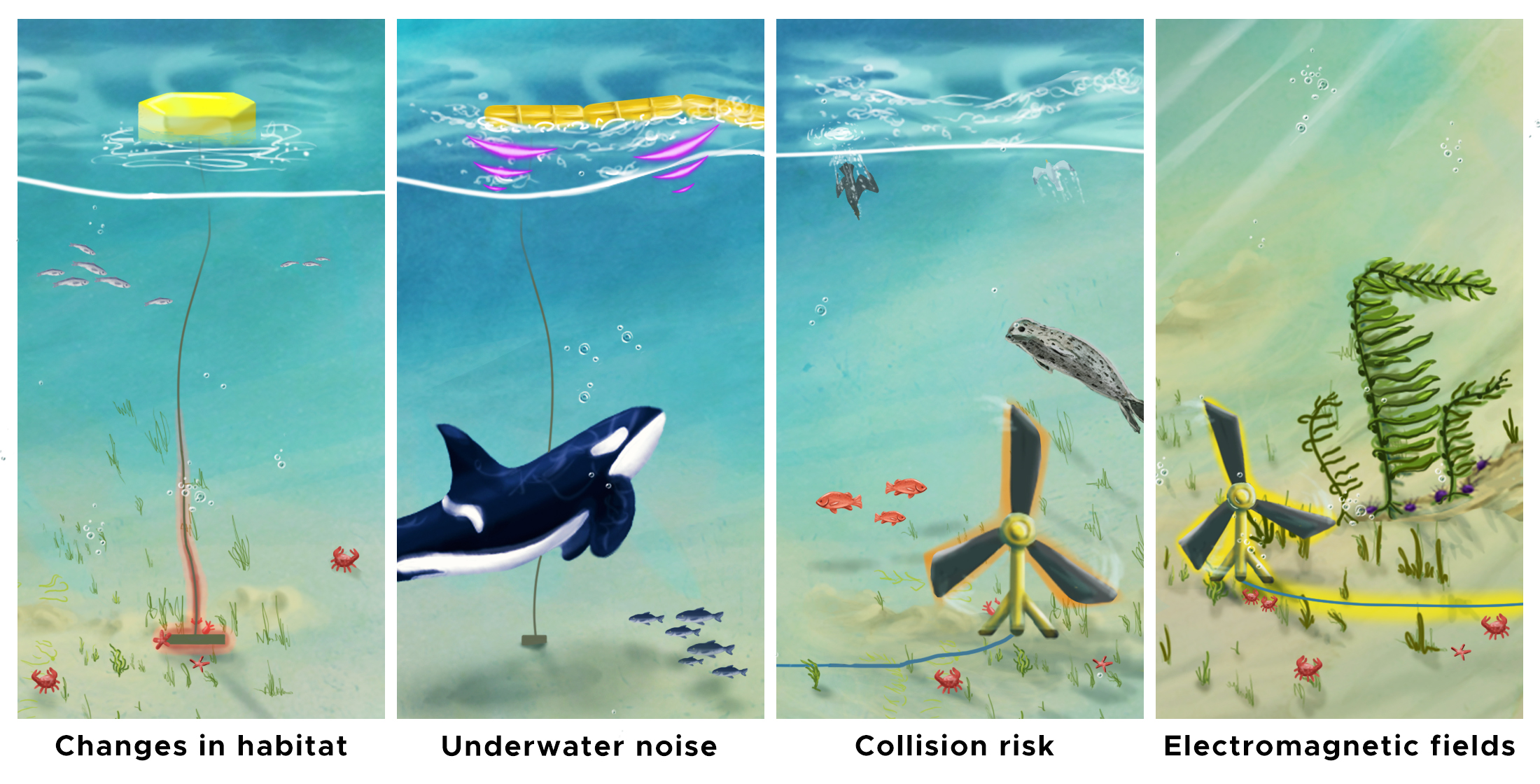
There are many steps involved in creating a scientifically accurate illustration. King's process starts with an interview. Researchers walk her through their vision for the drawing or graphic, explain the science, and provide resources, like papers, reference photos, or examples to draw from. She then gets to work, hand sketching a rough draft and doing additional research to better understand the research she's depicting. Once she decides on a composition, she moves to a computer to digitally complete the drawing. She uses different computer programs and techniques, depending on the style of the illustration. Most of the work King does is by hand, often using creative approaches to add design elements. For example, when working on the underwater illustrations shared in this story, she took a picture of a piece of cardboard and overlaid the drawing on top of it to create a textural element to the piece—an approach she learned over years of experience. Once the illustration is drafted, she works with the researchers to incorporate feedback and iterate until everyone is happy with the final product.
Scientific illustrations are valuable tools because they depict research in a tangible way. King’s illustrations are particularly useful when paired with technical information that is difficult to contextualize. For example, seeing underwater noise data alongside a drawing of a whale communicating near a wave energy converter adds essential context to why the research matters. Similarly, it can be hard to capture photos or video footage of Triton's environmental monitoring technology field tests due to the limitations of being underwater. Drawings of what these technologies look like in action creates a sense of the work that goes on beneath the water's surface. "I like to turn the nitty-gritty into something digestible for general audiences to grasp," says King. "Translating the technical details into the most important messages is particularly important for areas of science that people don't understand. I get to draw what most people don't see."
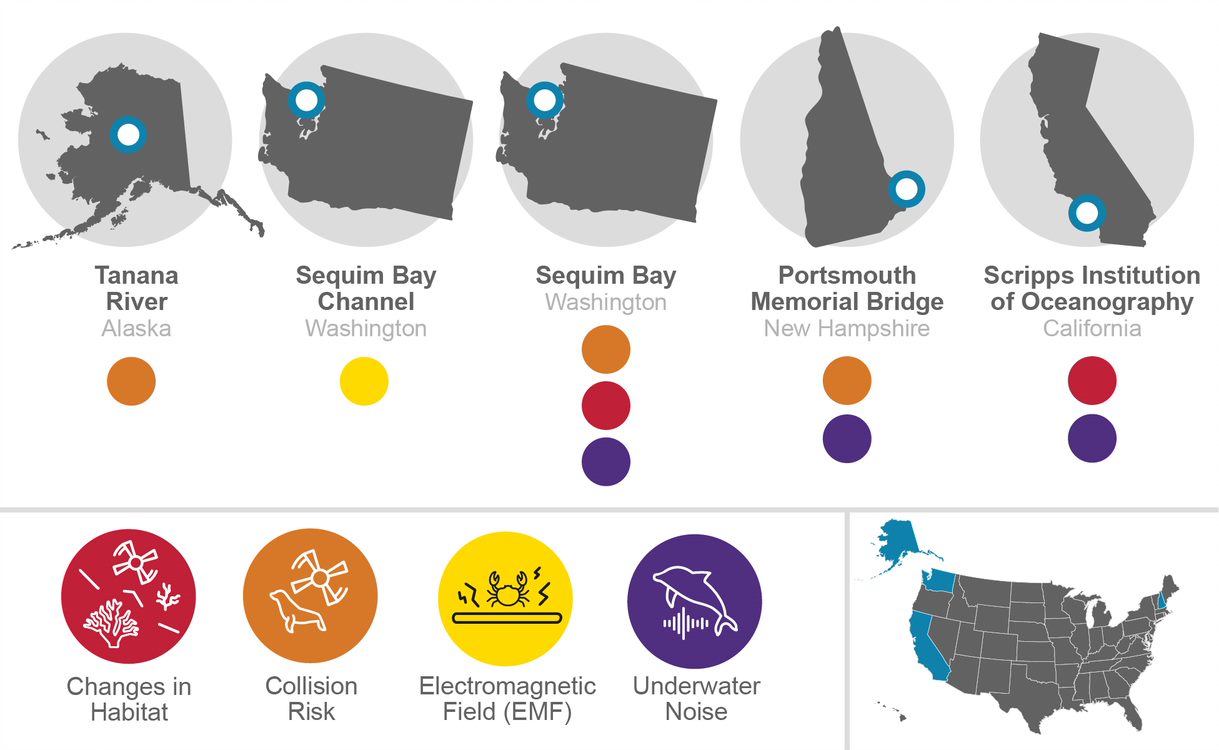
Keeping Triton creative
Triton has the incredible opportunity to share our research with the world every day through various types of science communication content. Thanks to PNNL's creative communications staff and their expertise and resources, we can share why our work matters on important communication platforms, such as social media, journal publications, webinars, newsletters, and our website. The content produced by this team of science creatives is versatile, allowing Triton flexibility in creating and distributing outreach content to various stakeholders and audiences in a way that uses a consistent voice. Thank you to Adkisson, Starr, King, and all the communications mavens who collaborate with the Triton team. Your creative genius allows us to share our work with the world!
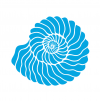
Written by Cailene Gunn.
Published: February 2, 2022